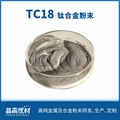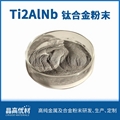| Model: | 0-150μm |
|---|---|
| Brand: | crigoo materials |
| Origin: | Made In China |
| Category: | Metallurgy , Mining & Energy / Metallurgy & Mining / Non-ferrous Metal |
| Label: | Shape Memory Alloy , Spherical metal powd , NiTi50 |
| Price: |
¥2500
/ kg
|
| Min. Order: | 5 kg |
| Last Online:17 Dec, 2024 |
Nitinol, also known as memory alloy or SMA (Shape Memory Alloy), is a metal material with shape memory ability, with an expansion rate of more than 20%, a fatigue life of 1*10 to the 7th power, and a damping characteristic 10 times higher than that of ordinary springs, and its corrosion resistance is better than that of the best medical stainless steel, so it can meet the needs of various engineering and medical applications, and is a very excellent functional material. Under specific temperature conditions, it can exhibit memory performance and superelasticity, and has biocompatibility, wear resistance, corrosion resistance and other characteristics, so it is widely used in aerospace, energy engineering and biomedical fields.
The main material properties of nitinol include the following aspects:
1. Shape memory effect: This is the core property of nitinol. Shape memory is when the parent phase of a certain shape is cooled from above the Af temperature (the phase transition temperature of nitinol) to below the Mf temperature (martensitic transition temperature) to form martensite, the martensite is deformed at a temperature below Mf, heated to below the Af temperature, and with the reverse phase transition, the material will automatically return to its shape in the parent phase. In fact, the shape memory effect is a thermally induced phase transformation process in nitinol.
2. Superelasticity: Nitinol has extremely strong superelasticity, and its elasticity can reach 8%, which is much higher than that of ordinary metal materials. This superelasticity allows the nitinol to undergo a martensitic transformation from martensitic to austenite when subjected to large stresses, thereby absorbing a large amount of energy and deforming, and when the stress is removed, it can return to its original shape. Nitinol exhibits superelasticity that makes it versatile in the medical field.
3. Wear and corrosion resistance: A dense titanium dioxide (TiO2) oxide film will be formed on the surface of the nitinol alloy, which plays the role of a physical and chemical barrier, so that the nitinol has excellent corrosion resistance, and some studies have shown that the corrosion resistance of nickel-titanium wire is similar to that of stainless steel wire. Due to the superelasticity and martensitic adaptive behavior of nitinol, good strain hardening ability and fatigue resistance, its wear resistance is higher than that of general materials.
4. Biocompatibility: In terms of biocompatibility, compared with the clinical reference control material AISI 316L stainless steel, nickel-titanium has no cytotoxicity, neurotoxicity, genotoxicity or allergicism, and the stress-strain behavior of nickel-titanium is very similar to that of bones and tendons, so the use of nickel-titanium can shorten the healing time, reduce trauma to surrounding tissues, and can be compatible with human tissues, and will not cause obvious rejection or allergic reactions. This makes it safe to use in the manufacture of a variety of implants and medical devices such as implants, stents, catheters, etc.
5. Antitoxicity: Nitinol shape memory alloy is an atomic alloy such as nickel-titanium, containing about 50% nickel, and nickel is known to have carcinogenic and carcinogenic effects. In general, the surface titanium oxide layer acts as a barrier, making the Ni-Ti alloy biocompatible, and the TixOy and TixNiOy of the surface layer can inhibit the release of Ni.
6. High strength and low density: Nitinol has the characteristics of high strength and light weight, which can provide sufficient strength while maintaining the lightweight weight of instruments and implants. This makes it very useful when manufacturing medical devices and implants that require strength and lightweight.











